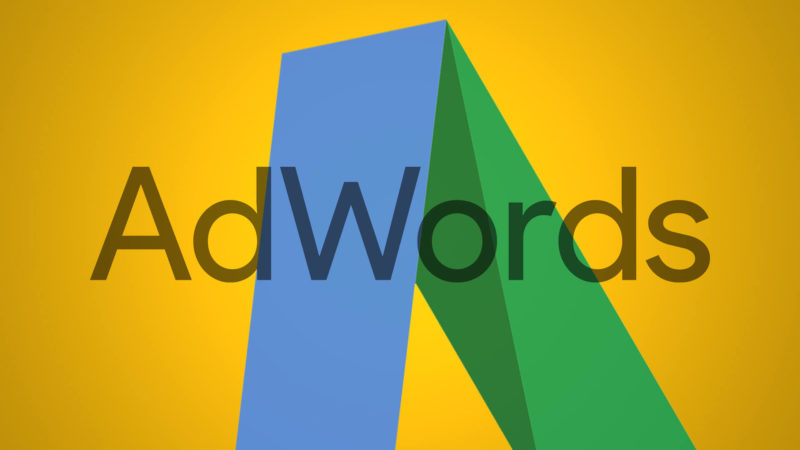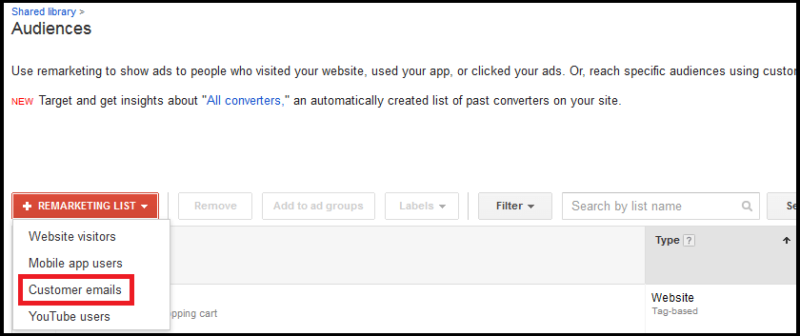RLSA Vs. Customer Match In AdWords: Similar But Different
How does AdWords' new Customer Match product compare to Remarketing Lists for Search Ads (RLSA)? Columnist Andy Taylor explores.
Google’s recently released Customer Match (CM) product allows advertisers to load email addresses into audience lists in AdWords to use those lists for ad targeting through search, YouTube and Gmail Sponsored Promotions.
When looking solely at the search functionality of this product, it may remind many of Google’s Remarketing Lists for Search Ads (RLSA) product, which allows marketers to create audience lists based on recent site visitors for use in search ad targeting.
Here are a few important commonalities and differences between the two products to help you determine how each might help your paid search program.
How Are RLSA And Customer Match Lists Created?
The first big difference to be aware of is in how to set up RLSA and CM audiences.
As RLSA lists are based on users who have visited your site, Google needs a way to identify which searchers have recently interacted with your site and how. Thus, advertisers must add a Google remarketing tag to website pages in order to give Google the ability to track users once they leave a site. Along with AdWords tags, Google Analytics tags can also be used for RLSA targeting.
Once the tags are active on the site, advertisers can then create RLSA audience lists in AdWords to target searchers based on past site interactions.
CM audiences, on the other hand, are created using lists of emails obtained firsthand by advertisers, which are uploaded directly to the Shared Library in AdWords.
For advertisers looking to encrypt the emails prior to upload, they should remove all extra spaces and make all characters lowercase. Next, the emails should be “hashed” with the SHA256 algorithm, which transforms the email addresses into strings of letters and numbers.
Looking at Google’s own example, “[email protected]” becomes 264e53d93759bde067fd01ef2698f98d1253c730d12f021116f02eebcfa9ace6.
Encrypting is optional, but it’s a good practice for protecting private customer data.
So now that we understand how to go about creating these lists, how are they similar and different in terms of who you can target?
Customer Match Vs. RLSA Audience Composition
For both audience types, lists must have at least 1,000 users which Google can identify in order to be used in search targeting, thus limiting how granular advertisers can make targeting. This minimum exists in order to limit privacy concerns surrounding this type of targeting.
With RLSA, advertisers are only allowed to target users who have visited their site within the last 180 days.
CM, on the other hand, allows advertisers to load all emails obtained firsthand, regardless of when the user last interacted with a brand.
In this sense, CM allows brands to advertise to more “dormant” users, as well as to target users who may only want to purchase seasonally once a year (for example, those who buy flowers for Valentine’s Day every year). RLSA, on the other hand, targets users who have very recently engaged with the site.
However, CM lists and RLSA lists cannot be created in a way that excludes one from the other within the audiences created. Thus, there will be overlap between some RLSA and CM lists.
For example, if an advertiser loaded all of the email addresses obtained more than 180 days ago as a list of dormant users who they want to get back in front of, that list would certainly contain emails for some users who have recently visited the site and who would be included in an RLSA list for all site visitors over the past 180 days.
The advertiser would need to add RLSA lists as audience exclusions for campaigns targeting CM, and vice versa, if the hope is to prevent overlap between the two types of audiences.
Aside from targeting users regardless of how recently they’ve interacted with a brand, CM also allows advertisers to layer on other intelligent insights about specific lists of users that only the advertiser has, such as segmenting users who have purchased more than three times in the past year.
RLSA, on the other hand, is geared towards targeting users based on pages visited or actions taken, such as abandoning a shopping cart or converting.
Potential Audience Size
As most websites have many more site visitors than they do users from whom they obtain email addresses, the potential audience size for RLSA lists stands to be much larger than that of a CM list for many websites.
However, whether RLSA lists are larger than CM lists will be hugely dependent on the details of the specific RLSA and CM lists in question.
For example, if an RLSA list targets all users who have visited in the past week, but a CM list contains every email obtained over the past decade, there’s a good chance the CM list might contain more users, though this will be heavily impacted by how many of those emails and past site visitors Google can identify as users in search.
Traffic may also not be directly proportional to list size, as different types of users have different search patterns and likelihoods of clicking an ad; and order volume is likely much higher than traffic volume, as both RLSA and CM users are typically more likely to convert than average searchers.
Traffic and order shares are also very different for brand campaigns compared to non-brand campaigns for most advertisers, with RLSA and CM users more likely to search for a specific brand because of their prior interactions with the brand.
These are important data points to understand in assessing how much an advertiser stands to gain from modifying bids, copy or landing pages with these types of audience targeting in their campaigns.
We’re currently testing to get a better understanding of what these comparisons look like for different types of brands, but preliminary results show active RLSA lists accounting for much more traffic than active CM lists for most advertisers using both types of targeting.
Customer Match Allows For Easy A/B Testing
In terms of testing for the impact of changes in targeting to these audiences, CM is the easier of the two for setting up an A/B test, as email lists can be easily divided into test and control groups.
With the conventional setup of RLSA lists, test and control groups would need to be created based on user actions taken on the site, and users could be divvied up based on visiting different parts of the site or completing different actions.
However, this is obviously more complicated than simply dividing an email list in half, and it can result in suboptimal test and control groups, as users who have been to different parts of the site or who have completed different actions may perform differently during the test cycle, regardless of changes to ad targeting.
Creating quality test and control groups is important, as they can be used to run tests on the incremental lifts provided by more aggressive bids or different ad copy and landing pages, and CM allows for just that.
Additionally, CM can be used to perform holdout tests in which advertisers shut off advertising to a test group in order to measure how many orders attributed to that group during the test period would occur anyway without paid search advertising. This could be particularly important to understand for CM users, as they are already clearly very aware of your brand if you’ve acquired their email address from past interactions.
Conclusion
Customer Match and RLSA both allow advertisers to cater paid search copy, landing pages, keyword targeting and bids to segments of users that have interacted with a brand in the past. So advertisers need to be testing both in order to assess potential gains from these types of adjustments.
Opinions expressed in this article are those of the guest author and not necessarily Search Engine Land. Staff authors are listed here.
Related stories
New on Search Engine Land

